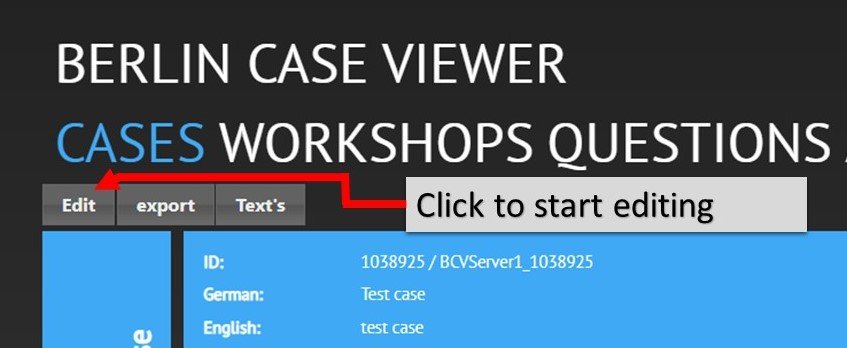Colored overlays are used to explain findings directly in the image. Here we show how these can be created and what types are available.
Open your case in edit mode before you start
- Search for the case you want to edit in the “Cases” tab
- Open the case you want to edit by clicking on it
- If you havent created a case yet check out the section about uploading images and case creation
- Once you have opened the desired case, you should see the overview for the case
- To switch to edit-mode, click on the “Edit”-button at the top left
- if you see a “ready”-button in the upper left corner you are already in edit-mode

How to create overlays
- Select the “view”-button (eye icon) for the series to which you want to add overlays.

- Select “Overlays” in the menu on the right
- You can now draw a first overlay by clicking on the image in the layer where you want the overlay to be
- Every click will place a point connected to the previously placed point, or if clicking on a line between two existing points the point will be placed in between these points
- To delete a point click on it and then click the appearing trash can
- The default mode is set to “curve”, which means between every point you put down there will be an adjustment point with wich you can modify the curve of the line. Other modes will be explained later
- You can give your overlay a label by changing the name in the “Label”-field or clicking on the “Label-description”-button
- Then click the “Position”-button and click on the image to choose a position for the label. When you are done click the “Back”-button
- If you want to have the overlay in more than one plane, you can either redraw it in the other plane or alternatively go to the plane with the overlay already drawn and copy it to the next/previous plane with the “copy prev”-/”copy next”-button
- To change the overlay-color simply click on the Fill- or Stroke-selector or choose one of the presets on the right
- Label and overlay-color will be persistent for one overlay across all planes of one series
- If you want another overlay describing another finding, click the “Add”-button
- You can now switch between the overlays by using the selector at the top
Creating overlay example video:
Drawing modes:
- Curve: Allows drawing of non-straight lines. Places adjustment point between every point you place
- Line: Connects placed points with a straight line
- Variants:
- Closed: Last point is connected to first point forming a closed, filled area
- Open: Last point is not connected to first point resultin in a line without an area
- Circle: Place one point as center of the cicle and another to choose the width


